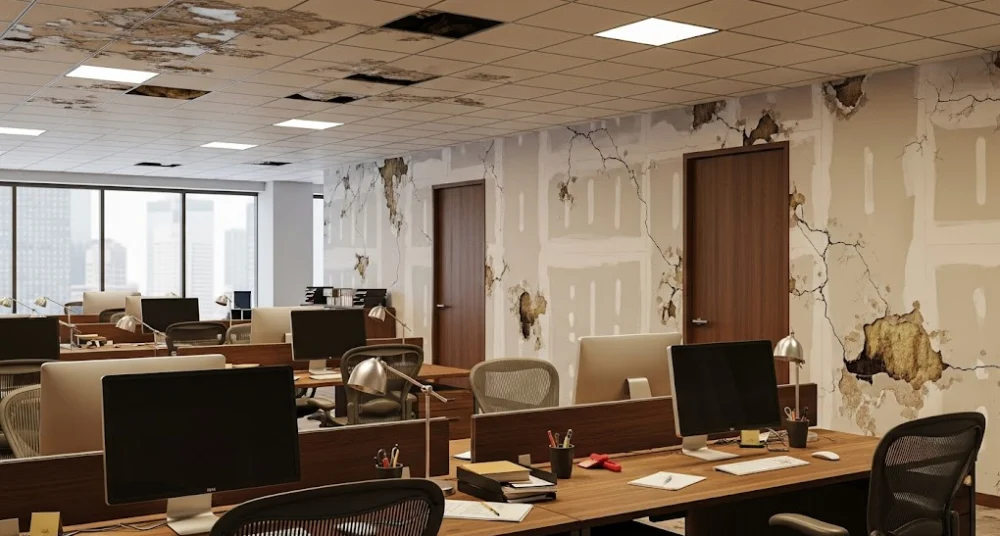
An initial wall damage might seem insignificant at first, but in a commercial setting, it does not fare well against time before turning into a liability. Whether you have to keep a retail space, medical facility, or an office building, keeping the walls in a solid state goes a great way in upholding professionalism, safety, and efficiency. Commercial Drywall Repair is not just about aesthetics; it is about structural confidence and operational continuity.
How can you discern when you must take action? Below are some crucial signs that it might be wise to call an expert before small matters interfere with the business.
1. Visible Cracks and Holes
Even minor cracks can hint at bigger issues behind the surface like shifting framing, water damage, or poor installation. Watch for:
- Horizontal or stair-step cracks
- Dented or punctured drywall
- Sagging or bubbling areas
From time to time, these may look primarily cosmetic. But very often there is a much deeper problem which requires professional attention.
2. Frequent Wall Repairs or Patching
If you patch the same spots again and again, some structural problem is probably going unaddressed over there. Repeated drywall damage may mean water is sneaking in, or there are stress points within the building. With time, these issues can alter the insulation, fire rating, and energy efficiency.
3. Moisture Stains or Soft Spots
Discoloration or soft drywall is almost always a red flag. It may signal roof leaks, broken pipes, or HVAC condensation. When moisture sits behind the surface:
- Mold can develop in as little as 24–48 hours.
- Drywall may crumble or weaken
- Nearby framing and insulation can also be compromised.
This is especially critical in public-facing businesses where indoor air quality must meet certain standards.
4. Warped or Uneven Surfaces
Waves or bows in the drywall may be caused by poor installation, could be an issue of improper ventilation, or obscured water damage. These irregularities can occlude proper furniture placement, signage, and even ADA specifications. Best if addressed early on, especially if doing renovations or preparing for a lease turnover.
5. Damaged Wall Finishes and Exterior Transition Zones
It’s not uncommon for businesses to overlook the relationship between interior drywall and exterior materials especially with stucco finishes. When water leaks or structural shifts affect exterior finishes, it often travels inward. In such cases, you may also need Commercial Stucco Repair alongside interior drywall remediation.
Both issues typically share root causes, like:
- Building settling
- Poor drainage
- Improper flashing or sealing around windows and doors
That’s why it’s important to assess all transitions between outside and inside walls.
6. Employee or Tenant Complaints
If employees or tenants start complaining about the smells, humidity, or mustiness, this should be taken seriously. These symptoms can be the telltale signs of hidden drywall damage. Business owners will find mold growth or deteriorated wall cavities through repeated complaints. Act early to keep liability or tenant dissatisfaction away.
Conclusion: Don’t Wait Too Long
Drywall Repairs in Jacksonville are all about early detection and rectification. Any delay in drywall repairs can increase the cost or cause concern over compliance issues or mum days.
SA Classic Painting offers a seamless solution for commercial drywall issues. Their seasoned team does more than repair damage; they restore the functioning and appearance of your commercial space with minimal disruption.
If the walls are softly crying for help, do not disregard them. SA Classic Painting will handle the repairs so you can do what you do best and run your business.
